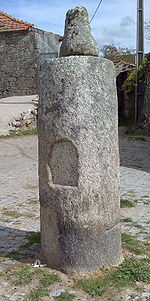Using Milestones Effectively
Milestones were the ancient world’s highway mile markers. Ancient travelers used these markers to evaluate their rate of progress.

Milestones in the context of CPM scheduling are fixed dates used to evaluate and/or impact project performance. Milestone activities have zero duration. Milestone activities either take their dates from the activities to which they are linked, or override scheduling calculations by forcing the milestone date to impact the forward and/or backward pass calculations. There are a variety of different types of milestones implemented in commercial scheduling software.
Consider the number of features that are present in office tools such as word processing applications. How many of these features do you use on a daily basis?
Just because scheduling software supports many types of milestones does not mean that you need to use all the types of milestones available to communicate with project team members. As with most complicated software you are unlikely to need these "enhanced" features.
The CPMtutor will introduce only three types of milestones. These milestone types are the types that most clearly model critical events on a construction project. As a result, these milestones types are the most clearly communicated with the project team.
Start No Earlier Than Milestone
A "Start No Earlier Than" milestone fixes the start of an activity to begin no earlier than the date provided. The start milestone's impact is on the forward pass only. When the activity with the start milestone is reached in the forward pass, then the milestone date is considered in the calculation. If the milestone start date is later than the calculated early start date, then the milestone date is substituted for the calculated early start date. If the calculated date is later than the early start date, then the calculated date is used.
Consider the case of a contractually defined date that defines the project's "notice to proceed" or an owner imposed phasing of work area access. In either of these cases, showing schedule progress prior to the contractually defined dates will be inappropriate. As a result, having such dates explicitly identified in the schedule, and impacting the start of related path of activities is important.
Bottom line - only contractually defined starting dates should always be modeled using "start no earlier than" milestones.
Finish No Later Than Milestones
A "Finish No Later Than" milestone fixes the end of activity to finish no later than the date provided. The finish milestone's impact is on the backward pass. When the activity with the finish milestone is reached in the backward pass, then the milestone date is considered in the calculation. If the milestone date is earlier than the calculated late finish date, then the milestone date is substituted for the calculated late finish date.
Consider the case of a contractually defined date that defines the project's "finish date." Since the objective of the schedule is to show the plan that will ensure completion by the contractual finish date, having the finish date explicitly included in the schedule would be an important aspect of creating a good model. Other contractually defined finish dates, such as requirements for phased project completion, should also be included in the schedule.
When we add a "plugged" late finish date to the end of a path of activities the impact will be shown most clearly during the float calculation phase of the CPM. As long as the path leading to the finish milestone completes earlier than the plugged date, there will be no impact. When the path leading to the finish milestone takes longer than the plugged date, then the float value will become negative. Negative float indicates that the path is that number of days behind schedule. Since float is a property of a series of activities on the same path, the float for all activities on that path will be negative. Negative float is an excellent tool to assist the team to focus their efforts.
Bottom line - contractually defined ending dates should always be modeled using "finish no later than " milestones.
Flag Milestones
The final type of milestone, and the one that would be the least needed, is simply an activity with zero duration that does not otherwise impact the forward or backward pass. This type of milestone may be called a “flag” milestone because it simple is provides a marker of the date on which the activity occurs. Such a flag milestone could be inserted anywhere in the schedule. You might use a flag milestone to mark the completion of a significant feature of work. One example of a literal flag milestone is to place the milestone following the structural steel path.

An alternative to the flag milestone is to use hammock activities that span across work areas based on type of work. Hammock activities were described in the previous section on work areas.
Bottom line - when considering the use of flag milestones, substitute hammocks if you can identify a path of activities on which the hammock activity's start and ending may be hung.
Lessons Learned
One of the values of the critical path method is its relative simplicity to model sequence and duration. Including milestones in your schedule will make that schedule more difficult to evaluate and should be used with care. Imagine a schedule with a thousand activities and five or six intermediate milestones affecting differentially effecting calculations along different paths. As you can imagine, if there are several milestone dates included in the same path they may cause all kinds of havoc with forward and backward pass calculations.
I recommend using plugged milestone dates only for contractually required start and end dates. Typically these dates include the start and finish of the project. Since you will want all activities in the schedule to reflect these dates, all activities in the schedule must be in the path that contains the start and finish dates. To accomplish this, you should have a single start activity and a single finish activity for your schedules. The start activity will have a "Start No Earlier Than" plugged date and the finish activity will have a "Finish No Later Than" plugged date.
Only if there are hard, owner imposed, constraints regarding access to different parts of the work area or if there are hard, owner imposed, intermediate contract completion dates, then you may carefully consider adding milestones between the start and ending of the overall project.
Instead of flagged milestones use hammock activities to show progress toward internally created project goals. Given that your project goals are likely to change as the project progresses. Don't force yourself and your team to reset (and subsequently explain) differences in schedules when "plugged" dates are changed to reflect changes to the construction team's goals.